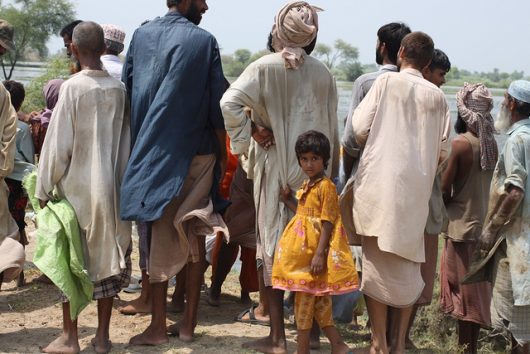Addressing Food Security in Pakistan Through Policy Change
 Last month, a new and improved version of the Pakistani National Food Security Policy was approved by the federal cabinet after years of development by the Ministry of National Food Security and Research. This is welcome news, as 60 percent of the population lacks food security in Pakistan. The new policy is already in the beginning stages of implementation throughout the country, and its goals are ambitious.
Last month, a new and improved version of the Pakistani National Food Security Policy was approved by the federal cabinet after years of development by the Ministry of National Food Security and Research. This is welcome news, as 60 percent of the population lacks food security in Pakistan. The new policy is already in the beginning stages of implementation throughout the country, and its goals are ambitious.
The ultimate objective of the new Pakistani National Food Security Policy is to raise the agriculture growth rate to 4 percent per year. Though 4 percent may seem like a minuscule number, it will be no small feat for the Pakistani government to accomplish. The agriculture growth rate has been relatively low over the past decade, averaging about 2.5 percent since 2008. Increasing that number will require a lot of changes to be made.
One issue brought up in the Pakistani National Food Security Policy is the lack of modern technology in the agriculture sector. According to the report, Pakistani farmers do not have access to machinery such as rice transplanters, vegetable planters, fruit pickers and other useful tools that would allow them to run their farms more efficiently and turn larger profits. To mitigate this problem, the new policy will reduce taxes on imports of farm machinery and create incentives for farmers willing to adopt newer technologies.
Another obstacle farmers are having to face is the increasing effects of climate change. Factors like drought and extreme weather fluctuations can have devastating impacts on crops and livestock and leave farmers with nothing to produce. One of the ways the Pakistani National Food Security Policy will attempt to alleviate the effects of this crisis is by investing in biotechnology and the genetic alteration of seeds to better resist drought and temperature changes. The policy will also promote crop insurance schemes and educate the public on which crops are more likely to survive in certain areas.
In addition, the new policy recognizes that many of the resources in Pakistan are not being utilized to their fullest potential. The country’s biggest crop is wheat, which is grown on 40 percent of Pakistan’s land and makes up more than 2 percent of the GDP by itself. However, there has been a global decline in wheat prices over the last few years and the government is thinking twice about having its entire economy rely on the success of one crop. Consequently, the Pakistani National Food Security Policy aims to focus more on cultivating fruits, vegetables, livestock, poultry and fisheries in the future.
Lastly, the policy addresses how unaffordable it has become for Pakistanis to purchase nutritious food. In response to this problem, the government hopes to devote more energy to continuing and creating programs dedicated to reducing poverty and hunger on the local level. Along with the strategies mentioned above to increase profits for farmers, this should be a great help with increasing food security in Pakistan.
It goes without saying that the Pakistani National Food Security Policy is an incredibly bold vision for the country, and it will require a lot of effort on the part of both farmers and the government. However, the fact that Pakistan is actively taking steps to eradicate food insecurity is a sign of hope for its millions of hungry citizens, and such a high goal may be exactly what the country needs.
– Maddi Roy
Photo: Flickr
